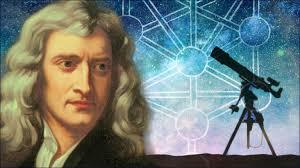The Very Beginnings Of The History Of Astronomy
The Very Beginnings of the History of Astronomy

Image credit: Michele Falzone/ Photodisc/ Getty Images
Astronomy in Ancient History
The Very Beginning
Since the beginning of time, humans have looked up at the stars and wondered... But the first documented instance of actual astronomical observations dates all the way back to the Assyro-Babylonians in 1000 BCE. These clever ancient people collected data on celestial bodies and recorded their periodic motions--quite impressive when you consider that the ancient Assyro-Babylonians did not have telescopes or really anything besides their eyes to observe the night sky.
Ancient Greece
Many ancient civilizations would continue to observe the stars, but it would be the Ancient Greeks who first attempted to use astrometry to estimate the location of celestial bodies in the sky. Copernicus is most well-known for his theory of heliocentrism, but as far back as the third century BCE, some Greek astronomers believed in the heliocentric system. Aristarchus of Samos was one such supporter, and he managed to use trigonometry to assess the relative distance of the Sun and the Moon from Earth. His measurement was not very precise, with him claiming the Sun was 18-20 times the distance of the Moon from Earth (current data puts that number at about 400 times more), but he definitely was on the right track.
A century later Greek astronomer Hipparchus of Nicaea created the first stellar catalogue using the ancient Babylonian practice of dividing a circle into 360 degrees and each degree into 60 arc minutes. This original catalog listed the positions of 850 stars to the accuracy of one degree--this might not seem so impressive today, but if you consider he was able to do this based on naked-eye observations and rudimentary gnomons, astrolabes, and armillary spheres. It's also thanks to Hipparchus that we have a magnitude system for describing the brightness of stars.
The Rest is Ancient History
It would be impossible to list every ancient astronomer who observed something important to astronomy, but needless to say, astronomers from ancient civilizations were all extremely intelligent individuals who collected data and created systems that are still in wide use today.
More Posts from Astrowizkids and Others

Messier 101 : Big, beautiful spiral galaxy M101 is one of the last entries in Charles Messier’s famous catalog, but definitely not one of the least. About 170,000 light-years across, this galaxy is enormous, almost twice the size of our own Milky Way. M101 was also one of the original spiral nebulae observed by Lord Rosse’s large 19th century telescope, the Leviathan of Parsontown. Assembled from 51 exposures recorded by the Hubble Space Telescope in the 20th and 21st centuries, with additional data from ground based telescopes, this mosaic spans about 40,000 light-years across the central region of M101 in one of the highest definition spiral galaxy portraits ever released from Hubble. The sharp image shows stunning features of the galaxy’s face-on disk of stars and dust along with background galaxies, some visible right through M101 itself. Also known as the Pinwheel Galaxy, M101 lies within the boundaries of the northern constellation Ursa Major, about 25 million light-years away. via NASA

There is literally nothing that can compete with how satisfying cancelling down an equation is
Double slit experiment gives me the chills...
Tried to understand the double slit experiment to understand Schrodinger's cat...I either got more confused and understand nothing or I understand it perfectly. It's one or the either. Or both. It might be both. It's probably both. I think it's both.


“How to Identify that Light in the Sky ” Is the NASA Astronomy Picture of the Day of today, November 14, 2021
I wish I could just invent an entire branch of mathematics just because I needed it to perform other experiments...
Isaac Newton invented calculus to perform his other experiments

Influenced by Galileo & Kepler, Newton became the father of physics
Neutral good when the question asks for fractions in the answer
Decimals anytime else

Chaotic good - same as my D&D alignment
just added a new place to my bucket list


Aurora Borealis dancing in Southern Ontario l Jason O'Young
-
 cheezbot liked this · 2 years ago
cheezbot liked this · 2 years ago -
 astrowizkids liked this · 2 years ago
astrowizkids liked this · 2 years ago -
 astrowizkids reblogged this · 2 years ago
astrowizkids reblogged this · 2 years ago
Astronomy. Physics. Stargazing. Access my website here: https://astrowizkids.homesteadcloud.com/blog
34 posts


